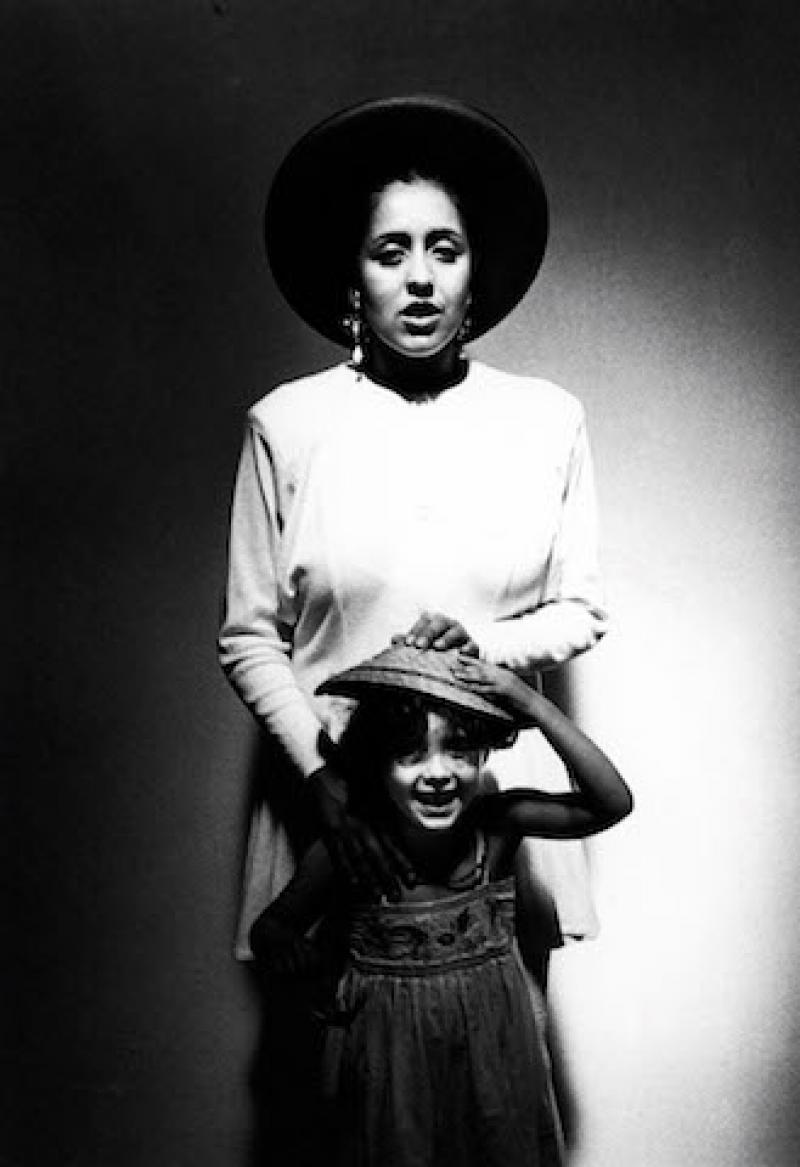There was always something a little diffident about teenage Marion Elliott-Said, who created her on-stage persona Poly Styrene after putting together her band X-Ray Spex from a small ad in the back pages of the NME in 1977. Male fans and the music press wanted her to be a punky sex kitten thrashing around on stage, but she was always more thoughtful in her lyrics, which touched on slavery, gender stereotypes, genetic engineering and our limitless hunger for shiny plastic goods.
Born in ‘57 and raised on a council estate in South London by her English mother, she didn’t see much of her Somalian father and as a mixed-race child in that era, battled with not quite fitting in among either the black or white families around her. Leaving school at fifteen to go travelling around England, she tried to make a career in fashion and then recorded a lovers rock song before having an epiphany at a Sex Pistols gig in Hastings. Fronting X-Ray Spex, Poly Styrene went on to have hits with ‘Oh Bondage up Yours’ and ‘Germ Free Adolescents’ and played New York before leaving the band after three short years.
 Celeste Bell, the singer’s daughter (pictured right), has co-directed I Am a Cliché with Paul Sng and had excellent access to Poly Styrene’s archive of diaries, song lyrics, newspaper cuttings and art works. Intercut with amateur footage, TV interviews and film of the band on stage and on the road (frustratingly unattributed or dated), Bell tells the story of how her mother found the pressure of being mobbed by fans and patronised by the press too much to bear.
Celeste Bell, the singer’s daughter (pictured right), has co-directed I Am a Cliché with Paul Sng and had excellent access to Poly Styrene’s archive of diaries, song lyrics, newspaper cuttings and art works. Intercut with amateur footage, TV interviews and film of the band on stage and on the road (frustratingly unattributed or dated), Bell tells the story of how her mother found the pressure of being mobbed by fans and patronised by the press too much to bear.
In a 1979 Arena (available on You Tube and extracted here), Poly Styrene (above) was already talking about her unease with her punk persona: “I liked playing the character. I thought it was fun, but now I’m not into it, I’m just Marion Elliott”. An attempt to reinvent herself as a more melodic singer-songwriter was met with critical hostility and she was dropped by her record label.
A brief marriage resulted in Celeste, but Marion experienced some kind of breakdown, began seeing visions and couldn’t look after her child. She ended up sectioned, misdiagnosed with schizophrenia before finding a way to live with bipolar disorder. There are shades of the Britney Spears and Amy Winehouse stories here; talented, vulnerable young women who craved attention on stage but found the music industries access to drugs – and fame itself – just too much to bear.
Marion Elliott reinvented herself again as a devotee of Krishna and spent five years living in the Hertfordshire temple funded by George Harrison, Bhaktivedenta Manor. Leaving the Hare Krishnas after another breakdown, she eventually lived independently and was reconciled with her daughter. She made a comeback with X-Ray Spex in 2008, singing on stage at the Roundhouse with Celeste but was diagnosed with terminal breast cancer.
I Am a Cliché features interviews not only with family members but also with many of the key players of that era – filmmaker-DJ Don Letts, band members including Lora Logic, admirers like singers Pauline Black and Neneh Cherry and journalists Jonathan Ross, Lucy O’Brien and Vivien Goldman. Johnny Rotten, who once locked Poly Styrene in a cupboard for an hour, doesn’t come out of their accounts too well. The documentary captures young women artists' struggles in punk culture, which may have been anti-Establishment but was still riddled with testosterone.
None of these witnesses appear on screen, their audio interviews are dropped in over archive footage and the audience doesn’t get any sense of how they appear today. To me, this is a somewhat unsatisfying way to direct a documentary, even if its makers hope that not putting their interviewees on screen makes for something more "filmic" than a traditional talking-heads arts TV documentary. Unfortunately, the lack of onscreen interviewees also allows for a little too much screen time to be spent on nicely filmed sequences of Celeste Bell herself talking through her memories of her difficult childhood and revisiting locations that had been important to her mother. Despite these stylistic reservations, this is still a fascinating documentary about an extraordinary woman.















Add comment